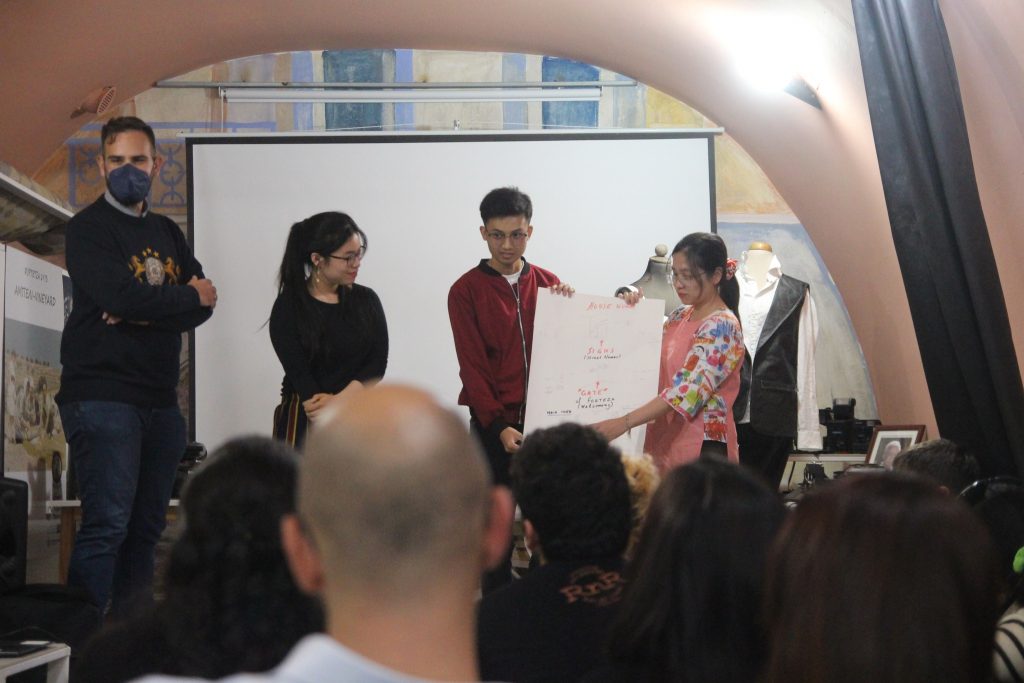In Greece it was decided that the project will be applied in the community of Fortetsa, in the suburbs of Heraklion Creta. Fortetsa was chosen because it is an area that is deprived of the tourism flow that normally visits the island of Crete. Even though it 2klm close to Crete’s most important archeological site, the Knossos, it is rarely visited by tourists or locals. The young people face lack of opportunities and the community it overlooked by the local government.
Action Synergy together with the cultural association of Fortetsa worked closely and organized series of important interventions in the area.
Here are the most important interventions that were organized.
The Hamam of Fortezza
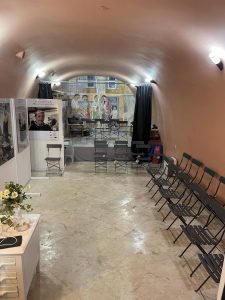 It was the most important intervention of the implementation of the project in Greece. An old Ottoman building that was totally restored in the framework of the project Memory, used for the organization of the third transnational meeting and now used as the cultural center of the Association of Fortetsa and a memory museum.
It was the most important intervention of the implementation of the project in Greece. An old Ottoman building that was totally restored in the framework of the project Memory, used for the organization of the third transnational meeting and now used as the cultural center of the Association of Fortetsa and a memory museum.
The story of the building
It is located at 35 Thali Street It belongs to the Ottoman building that houses the 12th kindergarten.It is believed to have been a Turkish hamam or mosque.In 1944 it was occupied by the Germans. In 1994 it was restored by the then mayor Kostas Klironomos and used as a classroom for the 12th kindergarten. An abandoned space since 2004, it became a shelter for marginalized people. In 2019, the Cultural Association of Fortetsa took action for the concession of the space from the Municipality of Heraklion and it is now in its hands. From 2019 to 2022 the space was lost in the gears of bureaucracy. Until 2022 when the area was released from urban planning and archaeology authorities, it remained closed. With the funding of the MEMORY project, the hall <<paleo hamam>> is repaired, equipped and opened for the community as a space for meetings, screenings, exhibitions, presentations, and small performances.
Manolis, a musician with an extra chromosome
Manolis Karpouzas was born in Fortezza, Heraklion in 1969.
He grew up comfortably and with a lot of love and was the third of 5 children in a family of 7.
His Dad Stamatis had the << Karpouzas Cafe>> in Fortezza square which is still operating normally until today by his brother Nikos.
Manolios, as everyone called him, could not walk until the age of 4 due to down syndrome, but he managed to become a master in playing spoons as a musical instrument at the age of 10..
On his own, he adapted the spoons to his little hands and with the help of his strong memory and hearing he became known for his talent from a very early age.
In the family business the children learned to work from a very young age, with his mum Maria always by their side but Manolis stood out because he gave entertainment.
He was loved by the local community, he had admirers for his talent from different parts of Crete and Greece as well as tributes from the local press, local radio and TV shows.
He died in 2019 at the age of 50.
In the framework of the memory project , the following interventions were organized
STATION OF LIFE -MANOLIS KARPOUZAS IN KATO FORTESA for his attitude to life itself and for our attitude towards diversity. The bus station in the main square of Fortetsa was called after him , and a painting was dedicated to him in order to honor him and all the people and children in the world that differ.
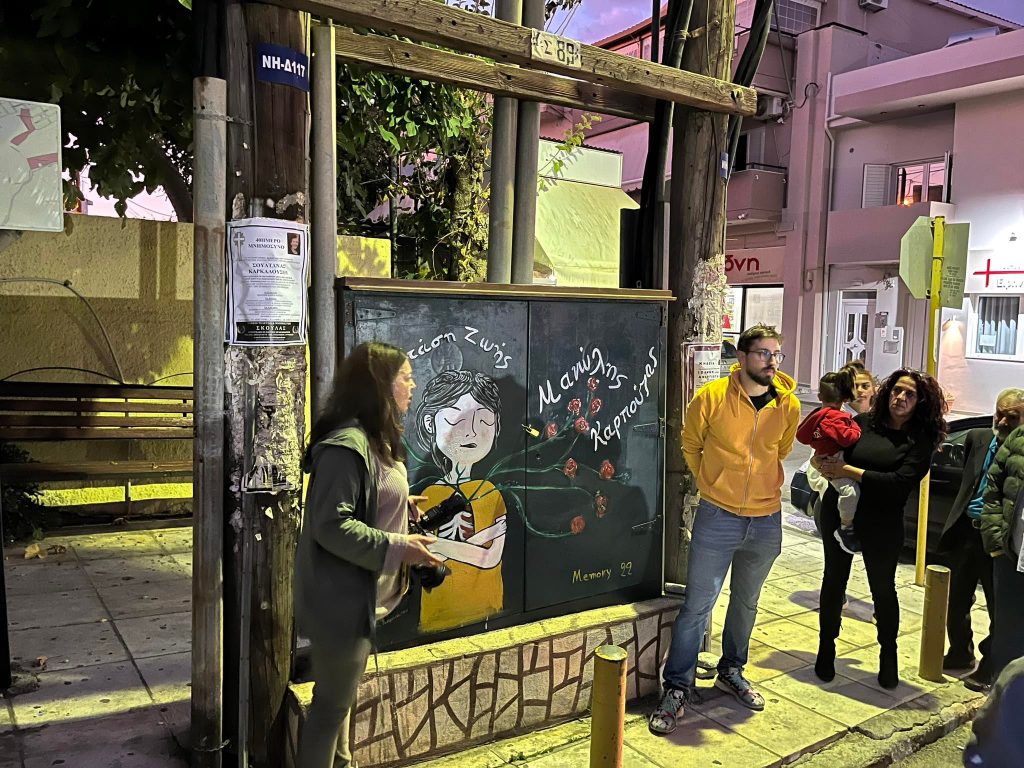
In the hammam a big iron table is dedicated to him with a qr code, so everybody can have access to his story.
With the participation of the local community and more than 30 international friends a special event was organized to his honor. Local people played the spoons that he loved so much. Manolis Papadakis played the lute accompanied by “Cajon” from Peru and “spoon players” from Fortetssa.
QR Code tables
In the newly renovated hammam, we decided to produce highly quality tables with the aim highlight the most important memories identified. In each of these tables, we have added a QR code which allows the visitor to learn the history of the memory.
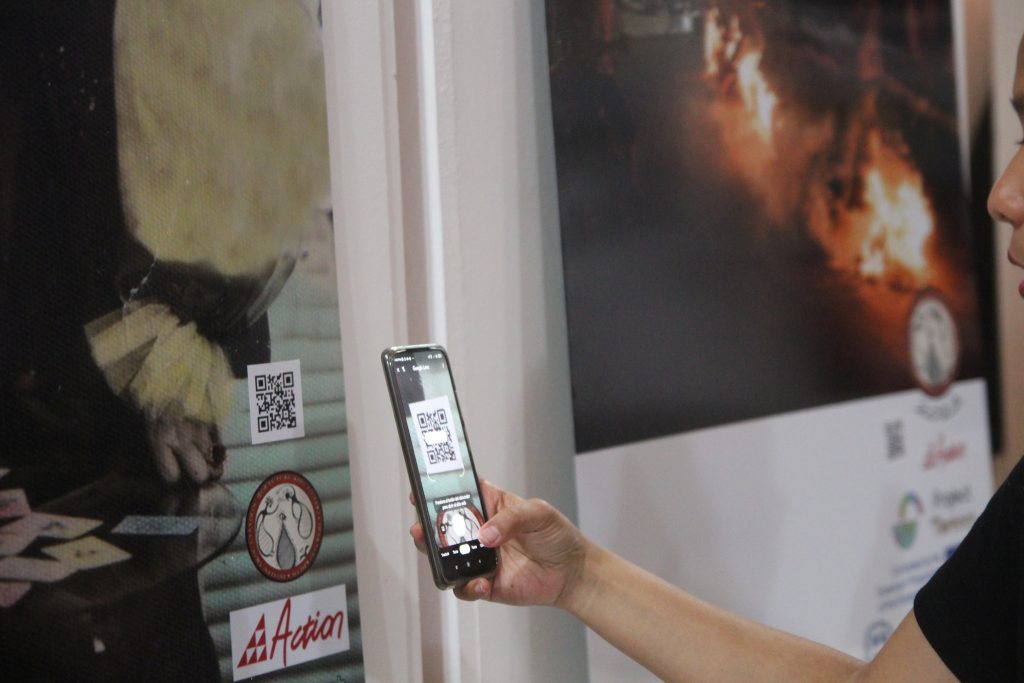
Refugees – Workshops
With the Asia Minor Catastrophe, the Treaty of Lausanne and the Exchange of Populations Convention, many refugees from Asia Minor fled to Heraklion. The Muslims of Heraklion followed the opposite path.
Hundreds and then thousands of refugees arrived in Heraklion, settling in various areas of the city and the prefecture. According to the 1928 census, 35% of the inhabitants of the city of Heraklion were Asia Minor refugees.
Depending on the land they were given, mainly fields with olive trees, the refugees created the refugee settlements of N. Alikarnassos, Agios Ioannou, Fortetsas, Katsampa and Achalenio.
The origin of the refugees was from Alikarnassos, Kydonies, Fokea, Alatsata, Aidinio, Karambournou, Smyrna, Vryoula.
The Census of 1928 finds 68 refugees settled in Fortezza. Their dominant occupation in Asia Minor was vineyards, especially sultana grapes, and olives. They transferred this activity to their new homeland, the vineyards gave a boost to the economic life of the island, in trading, exports (not forgetting the port of Heraklion), the creation of raisin factories and all this movement created and maintained several jobs for the refugees.
As in all the parallel stories of the settlement of the Asia Minor refugees, there were four points of constitution, the local association (cultural, landscaping, assertive for their settlement, agricultural where work demanded it), the church, the school and sport. Especially in sports, the Asia Minor people had a rich tradition, both organizational and technical, which they transferred and enriched the activities in Greece from 1922 onwards.
Intervention: Non- Formal Workshop
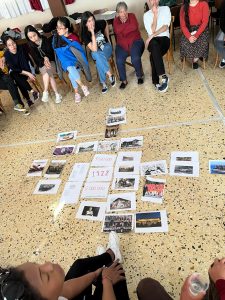 On Monday 31st of October we honored the rich history of Fortetsa’s refugees. Until the early 20th century, the settlement of Upper Fortezza consisted mainly of houses of Ottoman origin. After the Asia Minor disaster of 1922, many refugees from Asia Minor settled in Fortetsa.
On Monday 31st of October we honored the rich history of Fortetsa’s refugees. Until the early 20th century, the settlement of Upper Fortezza consisted mainly of houses of Ottoman origin. After the Asia Minor disaster of 1922, many refugees from Asia Minor settled in Fortetsa.
How do we approach such a historical subject, so familiar to the Greek hosts, but not at all familiar to people from other cultures? There are many ways to approach history. Many times, in our schools – unfortunately – we approach history as a unique narrative, a poem. Our opinion is that history on the one hand has many narratives. On the other hand, when talking about history, it is not enough just to talk about facts and dates, but you have to convey emotion and cultivate empathy.
We followed a methodology we developed within the project. At the beginning of the day, we distributed photos related to the Asia Minor disaster of 1922. We asked the participants to tell us what they think they see in these photos and an emotion these photos evoke in them. We then talked about the historical context of these photos and made connections to the contemporary reality of refugees. Then we shared 4 stories from literary texts or testimonies and formed 4 groups. We asked them to depict these stories through the theatrical technique of “frozen image”. Imagine it like a photograph made by people through their posture. Touching each person on the shoulder, we asked them to tell us the emotions of the role they are playing.
Later in the day, we presented to the participants a trunk (like a big box) that contained tangible memories of the Fortezza refugees. A property swap contract, a bracelet from the era, an old photograph and a bit of… cinnamon. In the form of an exercise, we asked the 4 groups to make use of these memories through various techniques. Urban art, installation, film making and performance. The day ended with a presentation by Aspasia Vasilakis, who has researched the school registers of the era and recorded the changes in names, origin, father’s occupation, etc.
Pipinos and Eleftheria Love Story
The story and the great love of Eleftheria Palios, a girl from Fortezza with Pipino Deluca, a 22-year-old Italian soldier who came to Crete in 1942 to fight with the allied forces for the Germans and against the Greeks. The charming Italian youth and the beautiful Cretan girl fell in love and had a secret love affair during the war.
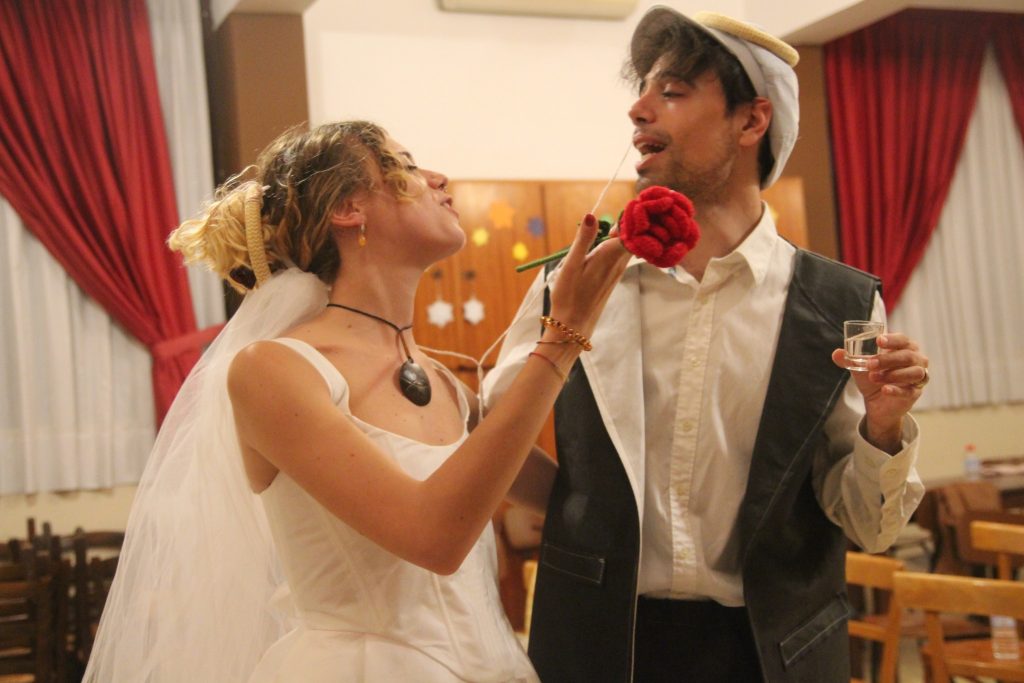
The Italian tailor asks for Greek helpers to sew the soldiers’ uniforms and one of them is Eleftheria.
With the end of the war in 1944, Eleftheria hides the Italian soldier and they subsequently have a family with four children.
Together they built a brick room and housed their family. The difficulties for this couple were too many but they did not prevent passion from becoming a great love and for Fortezza a great school of sewing that has been continued by the next generations until today.
Pipino and Eleftheria lived all these years together happily and became a story of great passion, a symbol of love and an example of life.
Intervention: Treasure Hunt Activity
Thursday, November 3rd was dedicated to love. We celebrated the legendary love that took place in the early 1940s between Eleftheria Paliou from Fortezza and Pipino Daluca, an Italian soldier who came as a tailor with the Italian Army during the invasion of the Axis forces. Eleftheria began to work with him as his apprentice and slowly this stormy love affair began. At the end of the War, Pipino stayed where his heart dictated. In Fortezza.
How did we showcase this love for our guests? First, we set up a treasure hunt game in all the community. At each stop of the game (grocery store, butcher shop, supermarket, tailor shop, church) we had left a qr code. Each qr code led to a piece of the story of this love story. The final qr code led to the wedding invitation between Eleftheria and Pipino. These roles were played by our beloved Italians Elisa and Innocenzo. The rest of the participants were asked to choose through lottery which role they would play in the sacrament. Priests traditional and non-traditional, relatives, friends, former lovers…
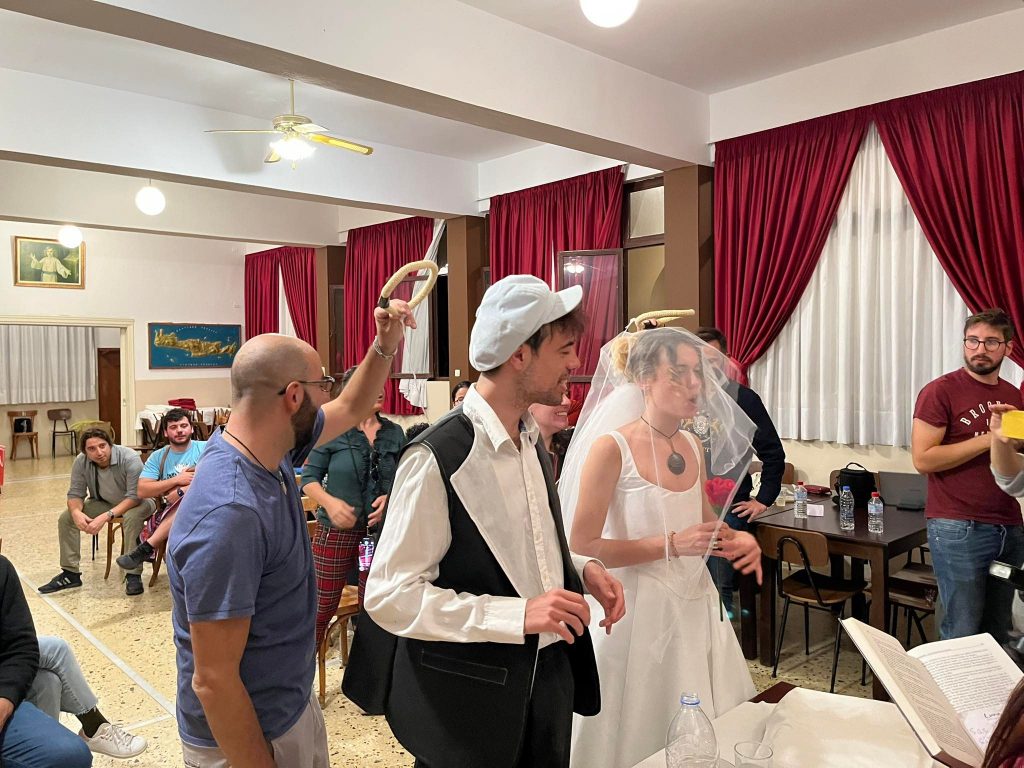
And yes, my friends, there was a wedding! With the help of Claire Kambani, local artist, who prepared a beautiful wedding dress and took care of the groom’s dressing, the wedding and the wedding feast was organized.
The Fotis Kafatos Memory
Fotis was a leading scientist, researcher, and teacher. He was also, throughout his life, a tireless creator. He opened roads, built things that we enjoy today. He started here, from Heraklion, after his schooldays, a lifelong path that made him a truly global Greek.
He left for America, where he studied biology at the renowned Cornell and Harvard Universities. Once he received his doctorate from Harvard, he was elected professor there, the youngest in the history of the prestigious university. He even served for years as the director of the University’s Department of Cell and Developmental Biology. Fotis left his position in Athens and came to Heraklion, where he worked with other pioneering scientists to establish the University of Crete and the Foundation for Research and Technology – Hellas. He was a pioneer in the establishment of the Department of Biology of the University and the Institute of Molecular Biology and Biotechnology of FORTH. He served as Director of the Institute and member of the Board of Directors of FORTH for more than 12 years. Fotis achieved things that seem impossible, because above all he was a leading scientist himself, one of the most important biologists of our time.
He was one of the founders of the global initiative to decipher the DNA of organisms, including the mosquito, which is the vector of malaria in humans, a disease that kills millions, mostly young children, around the world. He left behind abundant raw scientific material and a whole school of scientists who seek and strive to follow in his footsteps.
Intervention
The Cultural Association of Fortetsa, in honor of this very important scientist that started his journey in Fortetsa decided to rename the central square on his name and with funding of MEMORY project has created some draft designs for the renovations. The central idea is to design a sculpture referring to his main scientific work.
The Minas Kafatos Memory
Minas Kafatos was born in Crete on 25 March 1945 and as a child he spent his holidays at the family home in Fortezza in the area Feggari with the wonderful view and the beautiful starry nights.
This house in a beautiful neighborhood once inhabited by Turkish Cretans, Minas Cafatos made his first observations with a telescope given to him by his uncle.
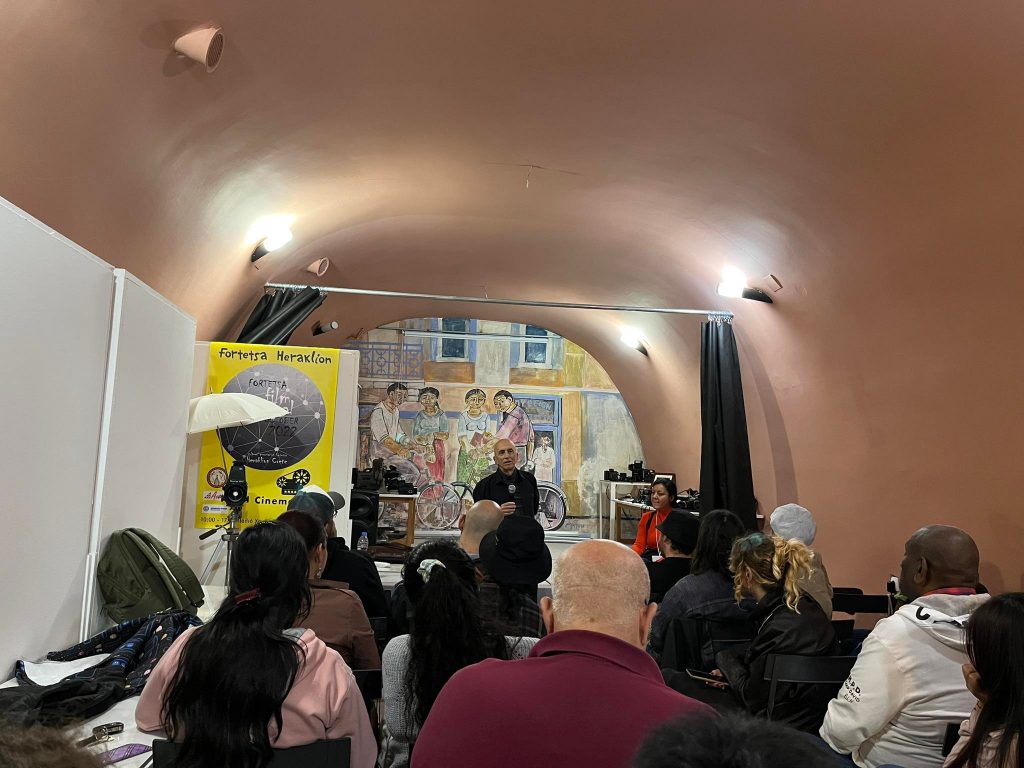
This was his initial contact with physics.
He earned a bachelor’s degree in physics from Cornell University in 1967 and a doctorate in physics from the Massachusetts Institute of Technology (MIT) in 1972. After his postdoctoral research at NASA’s Goddard Space Flight Center, he became a professor at George Mason University in 1984, where he remained until 2008, serving as dean of the School of Computational Sciences and director of the Center for Earth Observation and Space Research. Along with a team of computer scientists, Kafatos was recruited by Chapman University in California in the fall of 2008, where he founded and became Dean of the Schmidt College of Science and Technology until 2012. He is currently Director of the Center of Excellence in Earth Systems Modeling and Observations (CEESMO). He served as President of the Hellenic American Council.
Minas Kafatos lives in Marina del Rey, California with his wife Susan Young, a biologist with research in computational and experimental biology, and neuroscience. He has three children Lefteris, Stefanos and Alexios.
Minas’ older brother was the biologist Fotis Kafatos, founder and first president of the European Research Council.
Minas returns to Crete every year. He never forgets Fortezza where he offers speeches of scientific and intellectual knowledge.
Intervention
An event was organized through the physical presence of the distinguished astrophysicist Minas Kafatos who shared with our visitors his personal journey from the sky of Fortetsa where he first observed the stars to recognition in the academic community in the USA.
Souvenir and Landmark of Fortetsa
Based on the identification of the most important memories of Fortetsa, we organized a workshop in order to provide proposals and ideas of Souvenirs and Landmarks for the area of Fortetsa.
